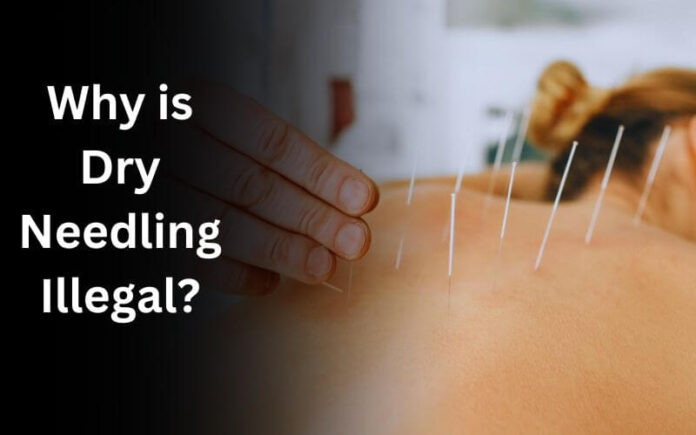Dry needling, a pain management technique used by healthcare providers to alleviate muscle pain and myofascial dysfunctions, has gained attention in recent years. Despite its potential benefits, the legality of dry needling remains a complex issue, varying across states in the United States. In this blog post, we’ll explore what dry needling is, why its legality is in question, and the risks and benefits associated with this controversial treatment.
What is Dry Needling?
Dry needling involves inserting thin, filiform needles into the skin near or directly into myofascial trigger points, which are hyperirritable spots in skeletal muscle. The goal is to stimulate these points, reduce muscle tightness, increase blood flow, and ultimately alleviate pain. Contrary to the traditional principles of Chinese medicine, dry needling, though resembling acupuncture, is founded on Western anatomical and neurophysiological concepts.
Why is Dry Needling Illegal?
The primary reason dry needling faces legal challenges is due to its ambiguous status within the scope of practice of various healthcare professions. In some states, physical therapists, acupuncturists, and medical doctors have debated whether dry needling falls within their respective domains.
This has led to a patchwork of laws and regulations across the country, with some states explicitly allowing dry needling for certain professionals, while others have banned it or left its status unclear.
Legal Status of Dry Needling
Currently, the legality of dry needling varies widely across the United States. Some states, such as Colorado and Utah, have passed laws explicitly permitting physical therapists to perform dry needling, provided they meet specific training requirements.
Other states, like California and New York, have not directly addressed dry needling in their statutes or regulations, leaving its legal status open to interpretation. In a few cases, such as Oregon and Idaho, state attorney generals have issued opinions against physical therapists performing dry needling, deeming it outside their scope of practice.
Is Dry Needling Illegal for Physical Therapists?
The question of whether dry needling is illegal for physical therapists is particularly contentious. Physical therapy boards in some states have determined that dry needling falls within the scope of physical therapy practice, while others have reached the opposite conclusion.
Acupuncturists have also raised concerns, arguing that dry needling is essentially a form of acupuncture and should only be performed by licensed acupuncturists. Medical and osteopathic doctors have weighed in on both sides of the issue, with some supporting dry needling as a legitimate pain management tool and others questioning its efficacy and safety.
What Are the Risks and Benefits of Dry Needling?
Proponents of dry needling argue that it can effectively reduce pain, improve range of motion, and promote healing in patients with myofascial pain syndromes, chronic pain conditions, and sports injuries. Some studies have suggested that dry needling may be as effective as traditional physical therapy interventions for certain conditions.
However, dry needling is not without risks. Improperly performed dry needling can lead to complications such as punctured lungs, excessive bleeding, nerve damage, and infections. These risks underscore the importance of proper training and technique for practitioners. The lack of standardized training requirements across states has also raised concerns about the safety and competence of providers offering dry needling services.
Conclusion
The legality of dry needling remains a complex and evolving issue in the United States. As healthcare providers, policymakers, and regulatory bodies continue to navigate this landscape, it is crucial to prioritize patient safety and ensure that practitioners meet appropriate training and competency standards.
Patients considering dry needling should be aware of the potential risks and benefits, and carefully research the qualifications and experience of providers offering this treatment. As more research emerges on the efficacy and safety of dry needling, it is likely that the legal and regulatory framework surrounding this technique will continue to evolve.
